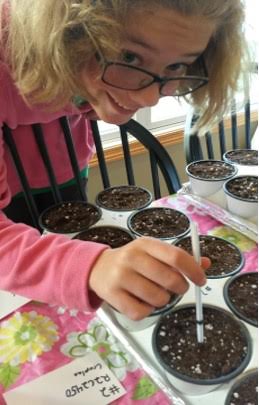It’s a drought: time for soybeans
What will happen to soybeans if they dry out too early?
Supervising teacher
Mr. John Mirabell
Student
Grace Moon
School
Geneva Area City Schools
Supporting files
itsa-droughttimeforsoybeans-2.pdf

In this project, five different types of soybeans were tested in three sequentially staged droughts with one control group. My hypothesis was that soybean P24T05R would do best in drought, and soybean R2C2450 would do the worst. The materials used for this were Pro Mix potting soil, four inch circular pots, pot holders (trays), a one-fourth cup measuring cup, and a soup ladle (about one and a half tablespoons). The process used to determine the best and worst soybeans was determined by the number of alive soybeans out of the total soybeans that sprouted, the number of plants that sprouted out of the total amount of soybeans per each type, and the number of green triplets, sets of green leaves, per each soybean type out of the total amount of green triplets. Then, those percents for each soybean type were averaged. Then each soybean was ranked; the higher the percent, the better the rank. The reader should know that my calculation on how much to water each plant was off and so they were watered too heavily for a period of time. The first part of my hypothesis proved true; the soybean with the overall best results was P24T05R. The second part of my hypothesis proved false; the worst was AG25X6. This then can be interpreted to mean that out of soybean types P28T08R, P22T69R, P24T05R, R2C2450, and AG25X6, a farmer looking for good drought resistance in his soybeans should try to find soybean P24T05R.